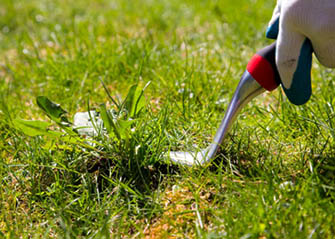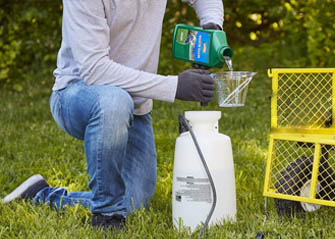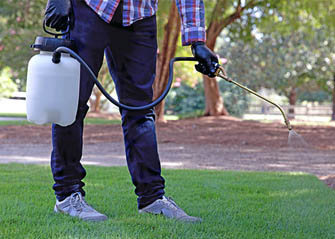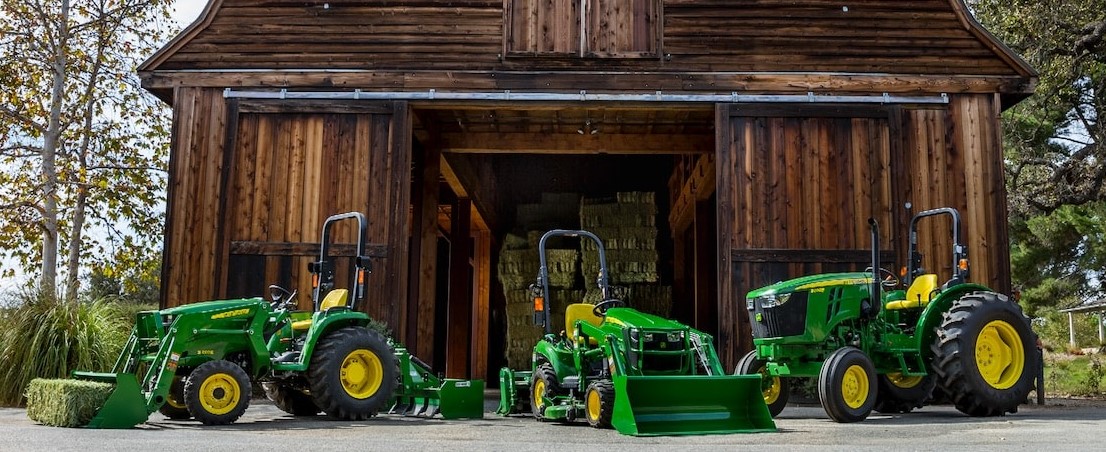Finding The Best Crabgrass And Weed Killer In 2023
Weeds are the nemesis of every gardener and lawn owner. These pesky plants appear when you least expect them and cause a lot of problems for your green corner. There are so many types of weeds, but one of the most common ones is Crabgrass aka Digitaria. This weed grows very quickly and it loves hot, dry conditions, however, you can encounter it in any climate. Thus, it’s essential to get rid of this unwanted plant as soon as possible, and for that, you need a very effective, best crabgrass killer for your lawn.
Now the question is – how to find one? Well, that’s what we wish to help you with. After some very extensive and detailed research, we can now finally bring you this crabgrass and weed killer review. Here we’ll help you learn all about some of the top options in the market, as well as what you need to pay attention to in order to choose only the best crabgrass and weed killer in 2023.
Top 7 Best Crabgrass and Weed Killers: Comparison Chart
| Type | Effective Against Other Weeds | Rainproof | Area Treatened | Volume | |
| BioAdvanced 704140 All-in-One | Concentrate | Yes | 1 hour | 6250 sq. ft. | 40 oz |
| Ortho 447805 WeedClear | Ready to use | Yes | 1 hour | 5000 sq. ft. | 32 oz |
| Primesource Quinclorac | Concentrate | Yes | n/a | n/a | 64 oz |
| BASF Drive XLR8 | Concentrate | Yes | n/a | n/a | 64 oz |
| BioAdvanced 704119A Extreme | Ready to use | Yes | 1 hour | 5000 sq. ft. | 32 oz |
| Roundup Crabgrass Destroyer | Ready to use | Yes | n/a | 1000 sq. ft. | 128 oz |
| Scotts TouchUp | Ready to use | Yes | n/a | n/a | 24 oz |
What is Crabgrass, and Why is It a Problem for Your Lawn?

As we mentioned earlier, the Crabgrass is one of the most widespread weeds, that loves hot climates with low humidity. Do you know why it’s called a Crabgrass though? Because of its look of course. The Digitaria looks like crab legs and grows in ‘clumps’ low to the ground with leaves quite broader than grass blades. Its overall look sometimes reminds another weed – quackgrass, and thus not a lot of people can immediately spot the difference between Crabgrass and Quackgrass. Which can be a big problem in deciding on an appropriate herbicide.
The biggest problem with Crabgrass is that it grows very fast and is very difficult to get rid of. So it’s essential to find and get rid of this weed before it starts rapidly growing all over your lawn or garden and causing stress on plants.
That is why it’s vital to make sure you have only a powerful, effective, and best weed killer for crabgrass since it ensures that you get rid of this unwanted visitor for good.
Types of Crabgrass Killers
Crabgrass killers come in two major types – the pre-emergent and the post-emergent herbicides. So what is the major difference between them?
Pre-emergent Herbicides
Otherwise known as Weed Preventers, Pre-emergent herbicides are the crabgrass weed killers that stop weeds from growing. They control annual weeds and pre-emerging grass, but you can’t use them to kill weeds that already exist.
The time you apply the pre-emergent crabgrass preventer on your lawn is as important as using the herbicide itself. You need to apply just before the weed seed starts germinating – not earlier or later.
Post-emergent Herbicides
Post emergent crabgrass killer deals with actual weeds are the ones that have grown fully out of the seed. It kills even the toughest of weeds. And, like pre-emergents, the time of application is very important. You should use it when the weed is young and tender.
If your lawn is quite weedy, you can combine both pre-emergent and post-emergent herbicides for full effect. While the pre-emergent herbicide prevents the germination that is yet to occur, the post-emergent herbicide kills already existing weeds.
Choosing the Best Crabgrass and Weed Killer
Whether you’re looking to get the best crabgrass killer for lawns or the most effective weed killer for your garden, there are a couple of things to consider:
First, are you looking for a product to kill crabgrass particularly or one to deal with all kinds of weeds? Second, will you use the herbicide when it is dormant or when it is already growing? Third, do you want to kill crabgrass in a lawn that’s already established or one that’s recently seeded? And finally, how wide is the lawn you wish to treat?
When you know the answer to all these questions, you can choose the best crabgrass preventer and weed killer. For that, keep in mind several aspects:
Selective or Non-selective

You can find weed killers in selective or non-selective formulas. While selective herbicides control particular categories of weed (such as ‘grassy weeds,’ ‘broadleaf weeds,’ etc.), non-selective herbicides kill all types of them.
And if you’re choosing selective herbicides, make sure to read the label, to ensure that the weed killer kills those plants that you need. A product labeled ‘broadleaf weed killer’ is not likely to work as a crabgrass killer.
Warm or Cold Climate
The best time to apply herbicides on weeds is when they are actively growing. This is when they are most susceptible. Temperature goes a long way in determining how effective the weed killer will be.
While making these crabgrass killer reviews, the Crabgrass seeds germinate when the soil warms to about 55-degrees in the spring. The crabgrass plant matures in summer and produces more seed until it dies when it gets cold.
So with a single spring application of pre-emergent, you can get rid of crabgrass in a cold climate area. But in a warm climate, you might need to apply pre-emergent again and again throughout the growing season, sometimes with post-emergent herbicides.
Application Method
Herbicides come in either liquid sprays or dry granules. You can easily apply granules using a properly calibrated lawn spreader. Liquid sprays, on the other hand, are best applied over large areas with a hose-end sprayer, a trigger bottle, or tank sprayer if you’re spot treating small areas.
Wind speed and direction are important factors to consider for applying spraying liquids. So plan your route and choose where you’re going to apply.
Using Best Crabgrass and Weed Killer Properly
When to Use Crabgrass Killer?
Crabgrass is a warm-season annual grass. It thrives in full sunlight, and high temperatures grow vigorously in poor, dry soil conditions, and germinates yearly in the early spring when the soil temperature rises above 50 degrees.
To keep your lawn free from this virile plant, you should apply pre-emergent and post-emergent herbicides properly in the early spring and summer, just when the weed starts growing.
How to Apply Crabgrass Killer?

You can find the crabgrass killer for lawns in either liquid or powder form. It would help if you had a spreader to apply the pallet or powder form, but the liquid, which is much better for homeowners, is different.
Other versions usually come with spray wands attaching to the container, and they are mostly ready to use.
How Do I Know if the Crabgrass Killer is Working?
After application, if you find small strips of violet to purple-striped spots on the stems of the crabgrass in your lawn, then the crabgrass killer is working.
With most herbicides, it takes just about two weeks for weeds to begin to die. Though others may require some more time, about four weeks or five.
Using Crabgrass and Weed Killers: Main Dos and Don’ts
If you’re using the best weed and crabgrass killer for the first time, you should know some basic things:
- Applying herbicides after cutting your lawn will limit the grass and weeds’ ability to absorb them. So don’t do it.
- Use products as indicated on the label—nothing more, nothing less.
- Do not water or seed your lawn after applying a treatment.
Crabgrass Killers Toxicity Concerns
Some weed killers contain dangerous chemicals like glyphosate, and they can be harmful to plants. According to the U.S National Toxicology Program’s (NTP) examination of herbicide formulations made with the active ingredient, glyphosate-based formulations are often more toxic than glyphosate alone. This is why you shouldn’t use the solution if there are pets and kids around. You should also avoid breathing in the solution while spraying.
Another reason to be very careful is that some crabgrass killers have Glyphosate and its formulations. And these are known to decrease cell viability and induce cell death at concentrations of 10mM or more (but they do not induce DNA damage and oxidative stress).This is why it’s so important to follow all the safe practices of applying pesticides – these will protect you and everyone around you from side effects.
Are There Organic Non-chemical Treatments for Crabgrass?
Yes, there are. Though most homeowners find chemical treatments to be best for treating crabgrass, you can try out other natural, non-chemical methods. It is either you pluck out to eat a bit of crabgrass by hand, or you apply corn gluten meal on your lawn to prevent them from germinating.
How to Keep Crabgrass Away?
Getting crabgrass off your lawns is one struggle; keeping it away is another. There are a few more things to do to prevent crabgrass from ever coming back to your lawns.
First, remove any new weeds emerging from the moment you notice them. Also, make sure to regularly mulch. Remember – the healthier your lawn the less chance that you’ll deal with a crabgrass problem.
Final Word
Overall, the first thing you need to do in order to choose only the best crabgrass killer is to determine whether you need a selective or non-selective herbicide. Also remember to keep in mind the climate you live in, and choose a weed killer accordingly. Otherwise, it will have no effect, and you’ll just end up wasting your money.
So keep these little tips in mind, and you will find the product that will ensure the protection of your green corner from any unwanted visitors. So best of luck, and feel free to let us know if you also have any tips on how to pick the best crabgrass and weed killer 2023!


